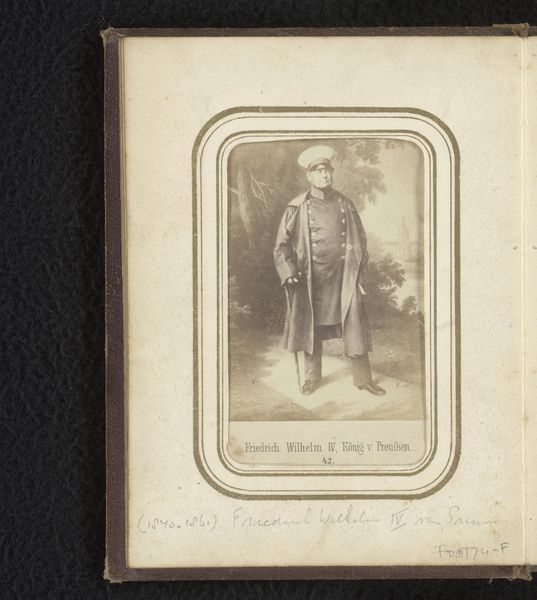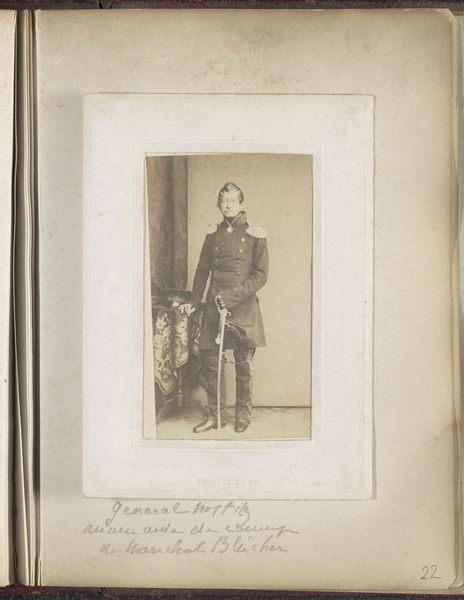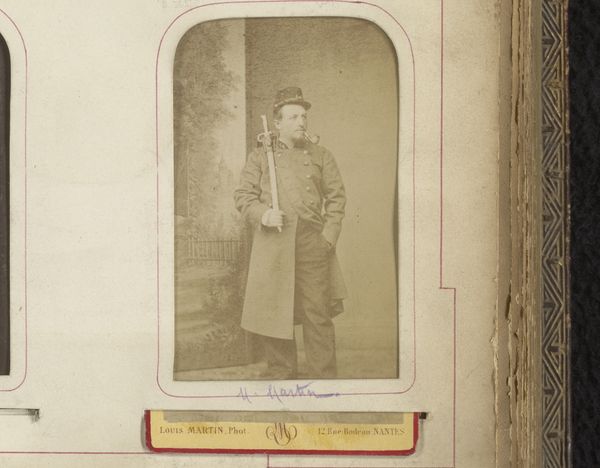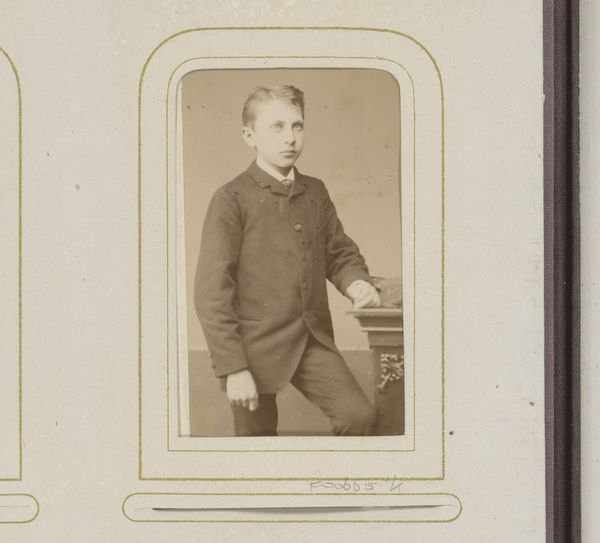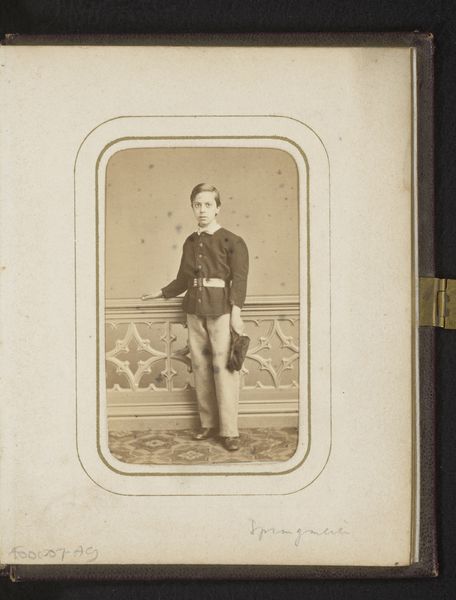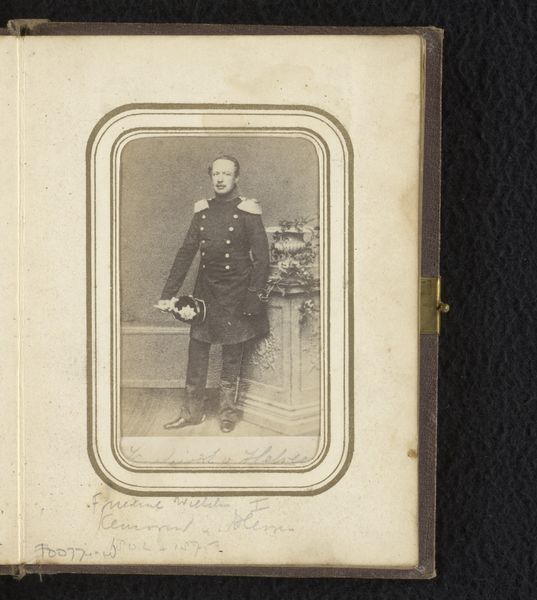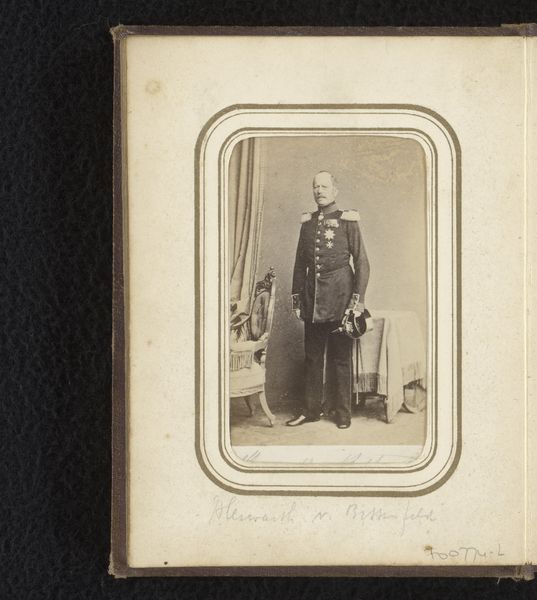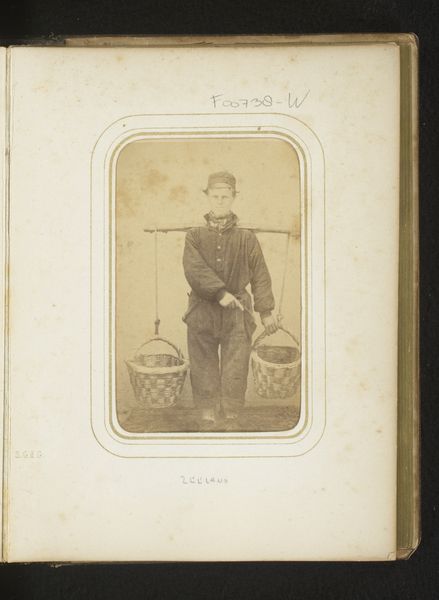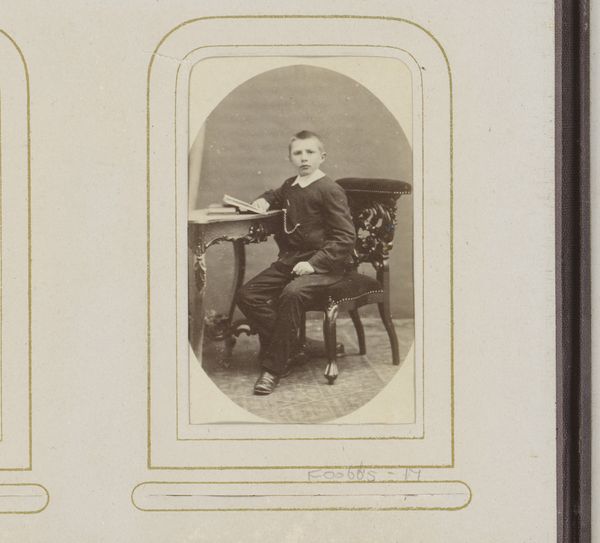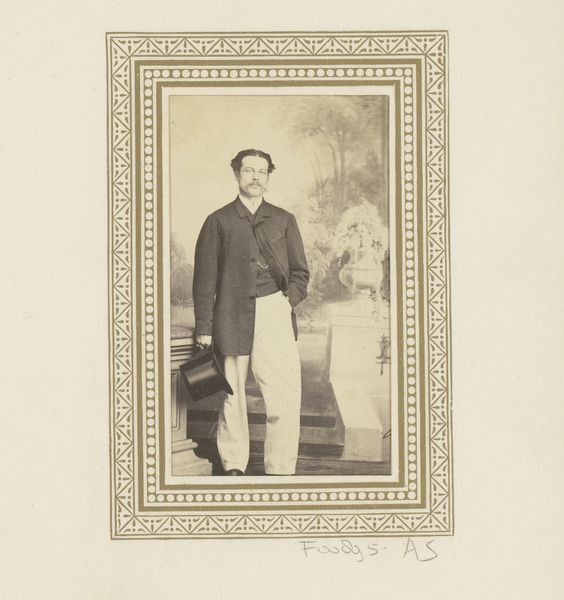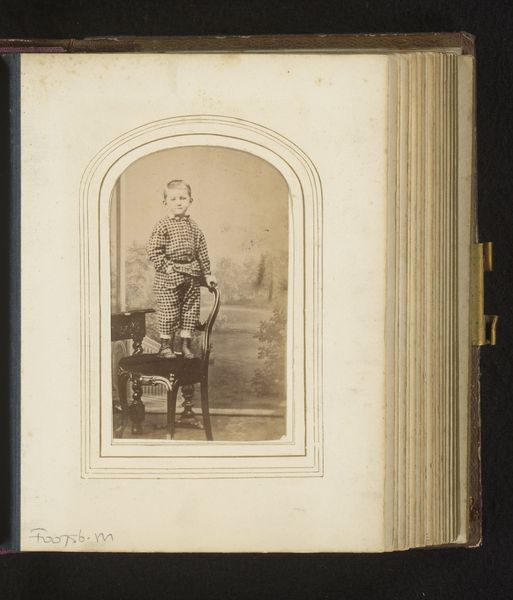
photography, gelatin-silver-print
#
portrait
#
photography
#
gelatin-silver-print
#
academic-art
#
realism
Dimensions: height 89 mm, width 52 mm
Copyright: Rijks Museum: Open Domain
Curator: Before us is "Portret van een man in uniform," a gelatin silver print by Ludwig Angerer, likely captured between 1865 and 1875. It's a striking piece. Editor: Striking is one word. My immediate impression is that it exudes an almost oppressive formality. The muted tones, the stiff pose... there's an air of enforced dignity, don't you think? Curator: Absolutely. Note how the light falls evenly across the subject, almost flattening him against the backdrop. The composition, meticulously arranged with the chair, the table, and that meticulously draped curtain, reinforces the posed nature of the image. Angerer meticulously controls every element, drawing attention to the formal geometry within the frame. Editor: And yet, I wonder about the sitter. The uniform, of course, speaks of power and hierarchy. But I'm curious about his personal narrative. Who was he within that rigid structure? How did his identity intersect with the expectations placed upon him? It's easy to see the trappings of authority, but where's the individual? Curator: A fair point. From a structural perspective, consider how the ornate frame surrounding the image functions. It enhances the portrait's perceived value, emphasizing the importance of the sitter as a symbol, an idea even, rather than focusing on individual characteristics. It directs the viewer to engage with form rather than empathy. Editor: Yes, the frame certainly performs that function, but by doing so, it can also reveal social values. To me, its hyper-stylized aesthetic underscores the obsession with outward appearances within that societal context, highlighting the pressures to conform and maintain a certain status, at a historical moment that's ripe for political upheaval across Europe. Curator: An astute observation! By analyzing Angerer's careful manipulations of form, of line and shadow, we see the ways that these formal choices actively convey social meanings. Editor: Precisely. It encourages us to move beyond the immediate impression of a simple portrait and explore the broader themes of identity, power, and representation. Curator: It’s precisely this dialogue between the formal elements and their socio-political implications that enriches our understanding and reveals the continued resonance of Angerer’s photographic artistry. Editor: Indeed, and perhaps by continuing these critical explorations we find in this portrait, not only what has changed but also what still remains the same in society.
Comments
No comments
Be the first to comment and join the conversation on the ultimate creative platform.
